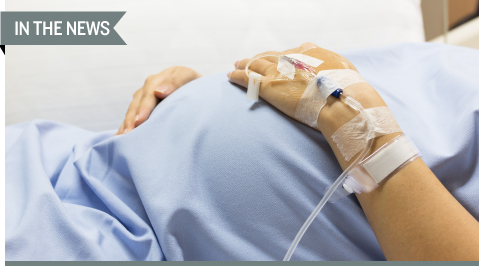
Mikumi / iStock / Getty Images Plus
Certain types of bacteria and immune factors may help predict and even prevent spontaneous preterm birth (sPTB), according to research published in Nature Communications. A team of investigators from the Perelman School of Medicine at the University of Pennsylvania (Penn) and the Institute for Genome Sciences at University of Maryland demonstrated the feasibility of screening for microbiota and immune responses in the cervicovaginal space during pregnancy and that this type of testing could lead to improved methods for stratifying women at risk for sPTB.
The findings hold promise for developing new sPTB tests. Diagnostics “could include rapid polymerase chain reaction and enzyme-linked immunosorbent assay testing,” Michal Elovitz, MD, the study’s principal investigator and professor of obstetrics and gynecology at Penn, told CLN Stat. “Testing could be performed on a noninvasive, self-collected vaginal swab.”
Globally, more infants die from sPTB than any other health issue. Those who survive often struggle with intellectual delays, vision and breathing problems, and specific conditions such as cerebral palsy and autism. Preterm birth is very hard to predict and little is known about its potential causes, making treatment a challenge for clinicians. It also has economic consequences: The National Academy of Sciences estimates that sPTB costs $26 billion annually in the United States alone.
“The interaction between microbial communities and their host, in many biological niches, has been found to be mechanistically involved in health and disease pathogenesis,” wrote the investigators. However, the relationship between sPTB and a woman’s vaginal microbiome has not been extensively researched.
Gathering a cohort of 2,000 largely African American pregnant women, whose mean age was 28, investigators collected vaginal swabs and took anthropometric measurements during three different points in the pregnancy to establish immunological profiles and characterize cervicovaginal microbiota using a unique Bayesian model.
The research yielded two important findings. Investigators found seven bacterial taxa significantly increased sPTB risk. “The strongest association was observed with Mobiluncus curtsii/ mulieris and Sneathia sanguinegens, with M. curtsii/mulieris, g Atopobium, and g Megasphaera exerting the most profound effect on the risk of sPTB,” investigators reported. In addition, higher levels of a factor in the innate immune system known as peptide β-defensin-2 appeared to lower sPTB risk.
African American participants, who are known to be at higher risk for sPTB than non-black women, showed the strongest associations for these two markers. Why certain specific microbes or microbial communities colonize in black women is unclear, said Elovitz. “The racial differences that we observed in the cervicovaginal immune response are novel and important findings, she said.
Overall, the study sheds some light on a path for identifying high-risk women and finding appropriate treatments for them, said co-senior author Jacques Ravel, PhD, professor of microbiology and immunology and senior scientist at the University of Maryland Institute for Genome Sciences, in a statement.
Next steps are to pursue some novel therapeutic trials, Elovitz said. Immune modulators and microbiome-based therapeutics show promise as therapies to help reduce the effects of sPTB.